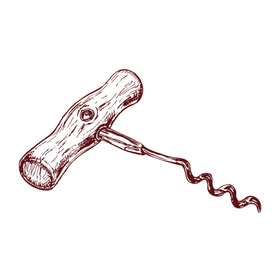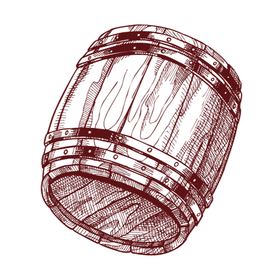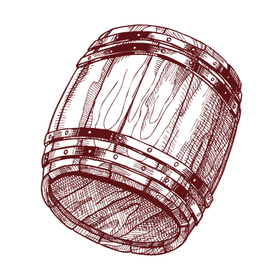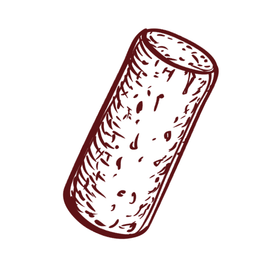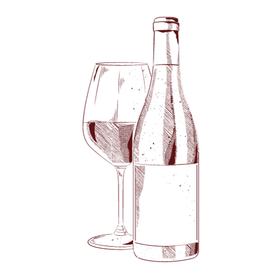Why is temperature control important in a wine cooler?
Temperature control is critical for wine storage, ensuring that wines age properly and develop their desired flavors. Most wines should be stored between 45°F (7°C) and 64°F (18°C), depending on the type.
How does a wine cooler maintain humidity, and why is it important?
Wine coolers maintain humidity levels, usually between 50% and 70%, to prevent corks from drying out, which could lead to wine spoilage due to oxidation.
What types of wine coolers are available?
Various types include freestanding wine coolers, built-in wine coolers, dual-zone wine coolers, and under-counter wine coolers, each offering unique features and benefits.
What should I consider when choosing a wine cooler?
Consider factors like temperature range and stability, capacity and size, shelving and racking options, energy efficiency, noise level, and design and aesthetics.
Where is the best place to install my wine cooler?
Place your wine cooler away from direct sunlight, heat sources, and areas with temperature fluctuations. Ensure it's on a level surface and has sufficient space around it for proper ventilation.
How do I set the right temperature for my wine cooler?
Use a wine temperature chart to determine the ideal range for your wines, then adjust the temperature controls accordingly. Allow time for temperature stabilization.
What is the best way to load wine bottles in a cooler?
Place bottles horizontally, avoid overcrowding, organize by type or region, and be mindful of different bottle sizes.
How often should I clean my wine cooler, and what's the best way to do it?
Regularly clean both the interior and exterior with mild detergent or a specialized cleaning solution, and avoid harsh chemicals. Clean the condenser coils to ensure efficiency.
What are common issues with wine coolers, and how can I troubleshoot them?
Common issues include temperature fluctuations, excessive noise or vibrations, and condensation or water buildup. Check for obstructions, ensure the door seal is intact, and consult the manufacturer's manual for specific troubleshooting steps.
When should I seek professional help for my wine cooler?
Seek professional help for persistent temperature fluctuations, continuous noise, leaks or water buildup, and electrical issues.
What are the benefits of using a wine cooler?
Benefits include proper wine aging, space efficiency, and improved wine taste due to consistent temperature, humidity control, and minimized light exposure and vibrations.
How does a dual-zone wine cooler differ from a single-zone cooler?
A dual-zone wine cooler has two separate compartments with independent temperature controls, allowing you to store red and white wines at their ideal temperatures simultaneously. In contrast, a single-zone cooler has one temperature control and is best suited for storing one type of wine.
Can a wine cooler be used to store other beverages or food items?
While primarily designed for wine, many wine coolers can also store other beverages like beer and soft drinks. However, it's not recommended to store perishable food items in a wine cooler as they typically do not reach temperatures low enough for safe food storage.
What's the significance of UV-protected glass in a wine cooler?
UV-protected glass doors in wine coolers help to shield the wine from harmful ultraviolet light, which can degrade and prematurely age wine. This protection is especially important for coolers placed in areas with exposure to sunlight.
How important is vibration control in a wine cooler?
Minimizing vibration is crucial in wine coolers as vibrations can disturb the sediment in wine, potentially affecting its aging process and flavor profile. High-quality wine coolers are designed to reduce vibrations from the compressor and external sources.
What should I look for in the shelving and racking of a wine cooler?
Look for sturdy, adjustable shelves that can accommodate different bottle sizes. Sliding shelves are a convenient feature for easy access to bottles. For collectors, some coolers offer specialized racks for odd-shaped bottles or bulk storage options.
What is a kegerator and how does it work?
A kegerator is a refrigeration device specifically designed to store and dispense kegs of beer. It keeps the beer chilled and uses CO2 to pressurize and dispense the beer
Can a kegerator be used for beverages other than beer?
Yes, a kegerator can be used for other carbonated beverages, such as cider, hard seltzer, and even homemade sodas, as long as they are compatible with the keg type used in the kegerator.
What types of kegs can be used with a kegerator?
Kegerators can accommodate different types of kegs, including mini kegs, Cornelius (or Corny) kegs, and commercial kegs (half-barrels, quarter-barrels, and sixtels). The compatibility depends on the kegerator's size and fittings.
How do I choose the right size kegerator?
The size of the kegerator you need depends on the amount of beer you want to dispense and the space available. Mini kegerators are great for small spaces and occasional use, while full-sized kegerators can hold larger kegs and are ideal for frequent entertainers or commercial use.
Can kegerators be installed both indoors and outdoors?
There are specific models designed for indoor or outdoor use. Outdoor kegerators are built to withstand elements like temperature fluctuations and moisture, while indoor models are tailored for home or commercial indoor environments.
What maintenance does a kegerator require?
Regular maintenance includes cleaning the beer lines after every keg change, checking CO2 levels, and keeping the interior clean. Periodic deep cleaning of the taps, lines, and keg couplers is also recommended.
How do I set the right temperature on my kegerator?
Most beers are best served between 38°F and 42°F. Adjust the temperature control on your kegerator to fall within this range, though specific beer types may have slightly different optimal temperatures.
How long does beer stay fresh in a kegerator?
Generally, beer in a kegerator stays fresh for about 30-60 days, but this can vary based on the beer type, keg type, and how well the kegerator is maintained.
Can I customize a kegerator to fit my home bar?
Yes, many kegerators come with customizable features such as different finish options, tap handles, and the ability to be built into cabinetry for a seamless look in a home bar.
What is the difference between a single-tap and a multi-tap kegerator?
A single-tap kegerator dispenses one type of beer at a time, while a multi-tap kegerator has multiple taps that allow you to dispense different types of beer simultaneously from different kegs.
How long does it usually take to receive an order after purchase?
How will my wine cooler be shipped?
Wine coolers are typically shipped via freight carrier on a pallet, usually to your front door or driveway, and the carrier schedules a delivery time with you. Visit our Freight Shipping Help page for more information: https://mywinecoolerworld.com/pages/freight-shipping-help-page
Can I make changes to my order once it's placed?
Yes, but it's essential to contact us at info@mywinecoolerworld.com as soon as possible before the product is staged for shipping. After shipment starts, we cannot recall it without paying a re-routing fee. The same applies to a change of address after a shipment has left the warehouse.
What should I do if my wine cooler arrives damaged?
Inspect the cooler upon arrival and report any damages immediately to info@mywinecoolerworld.com. Take pictures of all the damage


